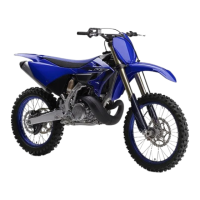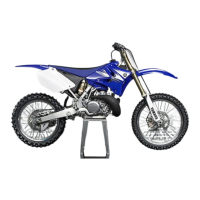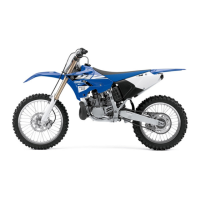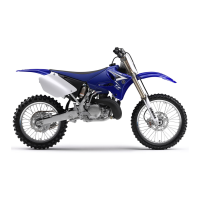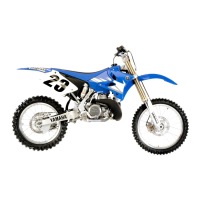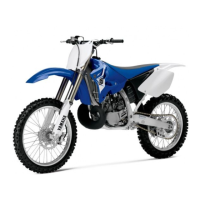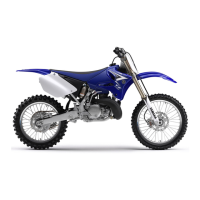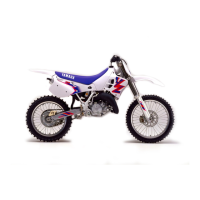CHASSIS
3-14
c. Tighten the locknut to specification.
EWA19150
A soft or spongy feeling in the brake pedal
can indicate the presence of air in the brake
system. Before running, bleed the brake sys-
tem. Air in the brake system will cause brak-
ing performance to be reduced.
ECA13510
After adjusting the brake pedal position,
make sure there is no brake drag.
EAM30234
CHECKING THE BRAKE FLUID LEVEL
1. Stand the vehicle upright on a level surface.
In order to ensure a correct reading of the brake
fluid level, make sure that the top of the brake
fluid reservoir is horizontal.
2. Check:
• Brake fluid level
The minimum level mark “a” or below Add.
EWA13090
• Use only the designated brake fluid. Other
brake fluids may cause the rubber seals to
deteriorate, causing leakage and poor
brake performance.
• Refill with the same type of brake fluid that
is already in the system. Mixing brake fluids
may result in a harmful chemical reaction,
leading to poor brake performance.
• When refilling, be careful that water does
not enter the brake fluid reservoir. Water
will significantly lower the boiling point of
the brake fluid and could cause vapor lock.
ECA13540
Brake fluid may damage painted surfaces
and plastic parts. Therefore, always clean up
any spilt brake fluid immediately.
EAM30231
CHECKING THE FRONT BRAKE PADS
The following procedure applies to all of the
brake pads.
1. Operate the brake.
2. Check:
• Front brake pad
Wear indicator grooves “1” almost touch the
brake disc Replace the brake pads as a
set.
Refer to “FRONT BRAKE” on page 4-5.
Rear brake pedal adjusting lock-
nut
6 N·m (0.6 kgf·m, 4.4 lb·ft)
Specified brake fluid
DOT 4
4
3
a
b
3
5
A B
A. Front brake
B. Rear brake

